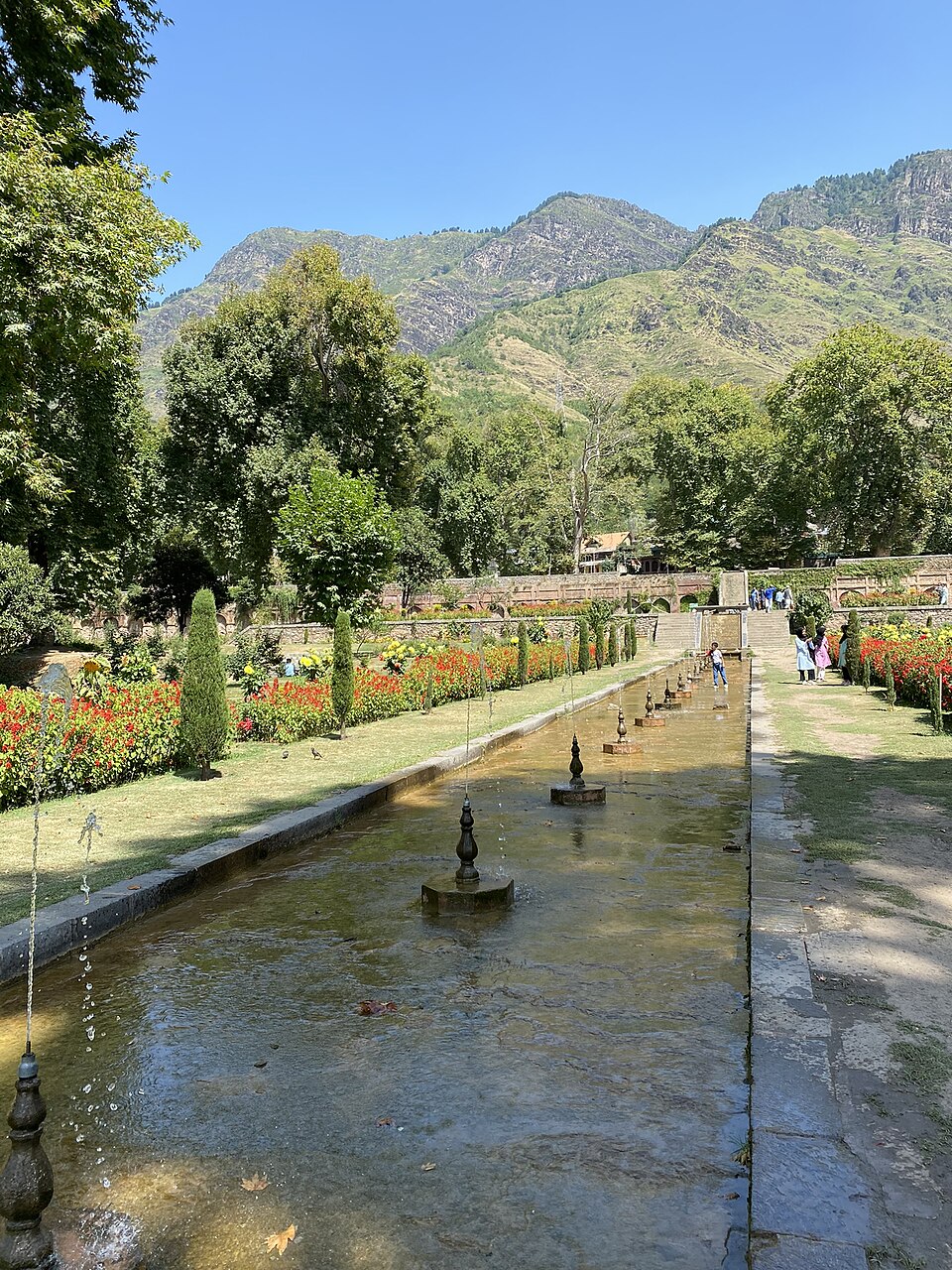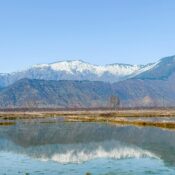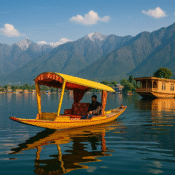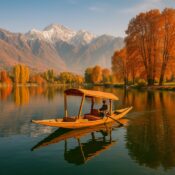Kashmir’s Mughal Garden Escape: A Family & Adventure Guide to Shalimar, Nishat & Chashme Shahi

Kashmir’s Mughal Garden Escape: A Family & Adventure Guide to Shalimar, Nishat & Chashme Shahi
Kashmir is famous for emerald meadows, mirrored lakes and soaring peaks – but tucked along the shores of Dal Lake is a trio of royal gardens that showcase the valley’s blend of Mughal architecture and Himalayan nature. Whether you’re planning an easy family holiday, designing an itinerary for clients or looking to pair history with light adventure, a tour of Srinagar’s Mughal gardens will leave you spellbound.
Why Explore Kashmir’s Mughal Gardens?
The Mughal emperors who ruled northern India were enamoured with the valley’s cool climate and lush landscapes. They carved terraces into the Zabarwan mountain foothills and channelled alpine streams into pools and fountains, creating havens designed for royal relaxation. These gardens aren’t just pretty parks; they are living museums that tell stories of imperial romance and horticultural ingenuity.
- Shalimar Bagh – the “Crown of Srinagar.” Emperor Jahangir built Shalimar Bagh in 1619 for his wife Nur Jahan. The garden is considered the high point of Mughal horticulture and is often called the crown of Srinagar【768005640586298†L165-L167】. Its stone pavilions, shaded pathways and perspective watercourse make it ideal for leisurely family strolls and photo ops.
- Nishat Bagh – the terrace of joy. Built in 1633 by Asif Khan, brother of Nur Jahan, Nishat Bagh is the second‑largest Mughal garden on Dal Lake【992780521112709†L158-L175】. Twelve descending terraces represent the zodiac signs, and each is lined with chinar and cypress trees【992780521112709†L220-L233】. The central canal is flanked by flowers and cascading fountains – perfect for children to explore and for travel agents seeking instagram‑worthy stops.
- Chashme Shahi – the royal spring. This petite garden was laid out around a natural spring in 1632 by Ali Mardan Khan for Prince Dara Shikoh【192099162065061†L146-L153】. Though the smallest of Srinagar’s Mughal gardens, its fresh spring water and terraced lawns make it a refreshing stop during a sightseeing tour. The garden is open from March to November【192099162065061†L146-L153】 and offers panoramic views of Dal Lake from its upper pavilions.
All three gardens are built along the right bank of Dal Lake with the Zabarwan mountains as a dramatic backdrop【192099162065061†L176-L179】, so it’s easy to visit them on a single day’s excursion.
Must‑Visit Spots & Experiences
Shalimar Bagh
Enter through the stately Black Pavilion and wander through four classical charbagh‑style terraces. The first terrace was once used by the royal women (zenana), while the second was open to courtiers and guests. The third terrace houses the impressive Diwan‑e‑Khas pavilion, where Jahangir entertained. Visit early in the morning or late afternoon for softer light and fewer crowds. In spring, tulips and almond blossoms add splashes of colour; in autumn the chinars blaze gold and crimson.
Nishat Bagh
Nishat’s 12 terraces step down towards Dal Lake, each level offering a new perspective. Children will love watching the fountains splash into the central canal, while history buffs will appreciate the Persian‑inspired symmetry. Bring a picnic or enjoy Kashmiri kahwa (saffron‑infused green tea) from a local vendor and soak up views of the lake and Hari Parbat Fort. On the upper terraces, you’ll find shaded lawns and chinar groves – ideal for a family break.
Chashme Shahi
This compact garden is centred on a mineral‑rich spring believed to have medicinal properties. Water from the spring cascades through terraced pools, keeping the garden cool even in summer. Take a sip from the public fountain, wander up the stone stairs to the royal pavilion and capture views of the snow‑capped Pir Panjal range. Because Chashme Shahi is smaller, it’s easy to combine with a visit to nearby Pari Mahal, an ancient Buddhist monastery turned Mughal school of astrology.
Other Garden Gems
If you’re visiting in early spring (late March to early April), don’t miss the Indira Gandhi Memorial Tulip Garden. Spread over 30 hectares on sloping terraces overlooking Dal Lake, it is Asia’s largest tulip garden, showcasing around 75 varieties of tulips along with hyacinths and daffodils【208469748530114†L131-L149】. The annual tulip festival marks the arrival of spring and makes for vibrant family photos【209190153160717†L133-L145】.
Cultural Highlights & Family‑Friendly Activities
- Shikara ride on Dal Lake: After exploring the gardens, hop on a hand‑carved shikara (canoe) for a leisurely ride to the floating vegetable markets and houseboat neighbourhoods. Children love feeding fish and watching kingfishers dart over lotus blooms.
- Craft shopping: Stalls outside the gardens sell colourful papier‑mâché boxes, hand‑embroidered pherans (traditional robes) and locally woven carpets. Support artisans by buying souvenirs; travel agents can arrange visits to craft workshops.
- Photography & bird watching: The lawns attract Himalayan bulbuls, hoopoes and mynas. Bring binoculars for bird watching or book a photography walk at sunrise.
- Combine with light adventure: Nearby viewpoints like Astanmarg offer paragliding opportunities【196965999972857†screenshot】, while Pahalgam’s Lidder River hosts rafting trips with stretches ranging from 2.5 km to 8 km and rapids up to class IV【7867734297706†screenshot】. Many travellers pair a day of heritage touring with rafting or a trek.
Flavours of Kashmir: What to Eat
A day of sightseeing deserves a feast. Sample Wazwan, Kashmir’s multi‑course banquet featuring dishes like rogan josh (tender lamb in aromatic gravy), yakhni (yogurt‑based mutton curry) and gushtaba (meatballs cooked in spiced yogurt). Vegetarians will relish tamatar chaman (paneer in tomato gravy) and nadru yakhni (lotus stem). Pair your meal with kahwa or a cup of noon chai (pink salted tea). For dessert, try phirni, a saffron‑infused rice pudding, or sheermaal, a sweet saffron bread. Family‑friendly restaurants around Dal Lake and the old city serve authentic Wazwan; travel agents can arrange cooking demonstrations for interested groups.
Travel Tips for Families & Adventure Seekers
- Best seasons: Spring (March–May) offers blossom‑laden paths and the Tulip Festival, while autumn (September–October) turns the gardens into a golden dreamscape. Summer is pleasantly cool in Srinagar, making it ideal for outdoor activities.
- Timing your visit: Arrive early to avoid crowds, especially on weekends and during festivals. Lighting is softer in the morning and late afternoon – perfect for photography.
- Entry fees: There is a small entrance fee for each garden (usually under ₹30 for Indian nationals and ₹100–200 for foreigners). Carry cash and keep tickets handy.
- What to bring: Wear comfortable walking shoes, carry a refillable water bottle and pack sunscreen. In spring, a light jacket is recommended; evenings can be cool.
- Respect local customs: Dress modestly, avoid littering and be mindful of prayer times at nearby shrines. Always ask permission before photographing locals.
- Combine experiences: To maximise your day, begin at Shalimar Bagh, continue to Nishat Bagh and Chashme Shahi, then end with a shikara ride or a visit to the Tulip Garden. Adventure seekers can add a short hike to Pari Mahal or drive to the nearby Zabarwan hills for paragliding【196965999972857†screenshot】.
Plan Your Mughal Garden Tour with Travel Execute
At Travel Execute, we craft personalised itineraries that blend Kashmir’s royal heritage with adventure and comfort. Whether you’re a family looking for a relaxed holiday, a travel agent curating group packages or an adventure seeker wanting to pair garden walks with rafting or paragliding, our local experts will handle all the logistics.
Contact us today to design your Kashmir escape:
- 📞 WhatsApp/Call: +91 9541955509
- 💎 Email: info@travelexecute.com
- 📍 Location: Srinagar, Kashmir
Click the button below to chat with us on WhatsApp and start planning your Mughal garden adventure:
Tags: Mughal gardens, Shalimar Bagh, Nishat Bagh, Chashme Shahi, Dal Lake, Srinagar, Kashmir travel tips, family travel, adventure travel




